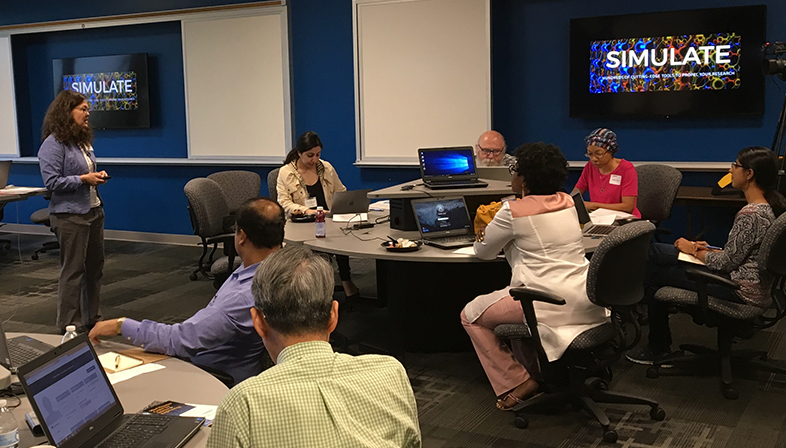About us
 The National Science Foundation (NSF) is funding Purdue University for the operation and advancement of nanoHUB.org, a national nanotechnology infrastructure. Two other independent NSF grants to Indiana University and the University of Illinois at Urbana-Champaign, will advance nano-manufacturing and nano-bioengineering while using nanoHUB to engage a global community.
The National Science Foundation (NSF) is funding Purdue University for the operation and advancement of nanoHUB.org, a national nanotechnology infrastructure. Two other independent NSF grants to Indiana University and the University of Illinois at Urbana-Champaign, will advance nano-manufacturing and nano-bioengineering while using nanoHUB to engage a global community.
The NCN cyber platform plans to expand its widely used nanoHUB online science and engineering gateway, developing a virtual society that shares simulation software, data, and other innovative content that provide engineers and scientists with the fundamental knowledge required to advance nanoscience into nanotechnology. The NCN cyber platform is led by Gerhard Klimeck, principal investigator and professor of electrical and computer engineering at Purdue University.
Annually, over 1.7 million visitors participate in nanoHUB, an online meeting place for simulation, research, collaboration, teaching, learning, and publishing. The nanoHUB provides a library of over 700 simulation tools, free from the limitations of running software locally. Over 21,700 people annually use simulation tools on nanoHUB in the scientific computing cloud.
nanoHUB provides over 7,400 resources for research and education, including courses, tutorials, seminars, discussions, and facilities to foster nano-research collaboration.
NCN founding director Mark Lundstrom, the Don and Carol Scifres Distinguished Professor of Electrical and Computer Engineering at Purdue, launched the effort in 2002 with a five-year, $10.5 million NSF grant. The NSF funding was distributed among six partner universities to seed the infrastructure creation and develop nanoHUB content.

Impact on teaching
- Over 35,000 students in more than 1,700 classes in 185 institutions have utilized nanoHUB tools in formal University teaching (homeworks, projects).
- Over 70% of the published tools have been adopted in formal university teaching (homeworks, projects).
- Most of these tools are adopted for formal education in less than six months. As a comparison, the average time for scientific textbook editions is 3.8 years.

Impact on research
- Over 2,600 scientific papers cite nanoHUB. More than 68,300 secondary citations result in an h-index of 121. The papers cover nano research, nano education, and cyberinfrastructure.
- Over 34% of the published tools have been cited for research usage.
- 37% of the nano research papers involve experimental data.

Impact on industry
- 43% of the students taking nanoHUB-U courses on edX are from industry.
- 6% of the nanoHUB-citing paper authors are from industry.

Impact on computing
- nanoHUB is a software-as-a-service, end-to-end user-oriented computing cloud.
- Users do not need to install any software.
- nanoHUB delivers the tools/models, the user interfaces, and the compute cycles.
- Simulation instances can be shared among users for collaborations.